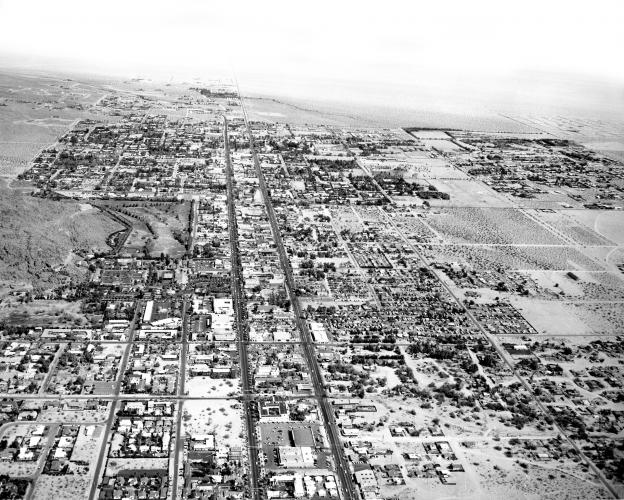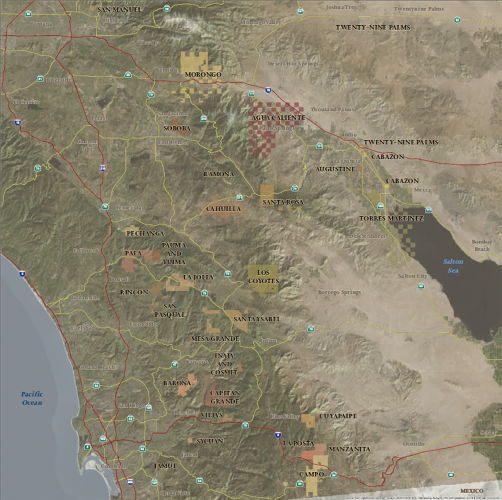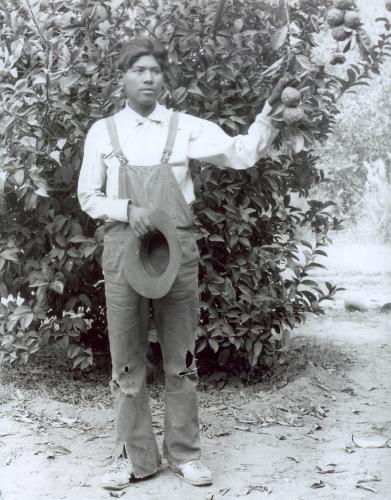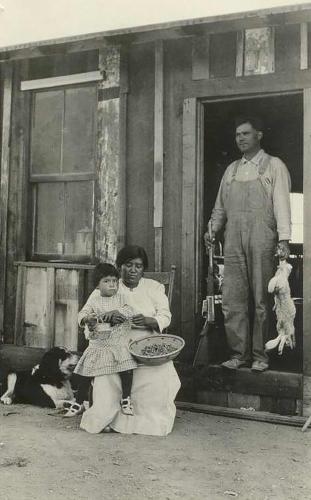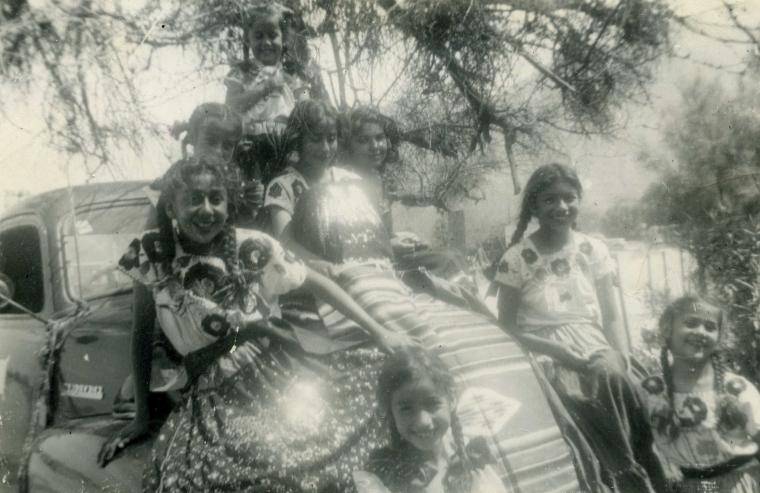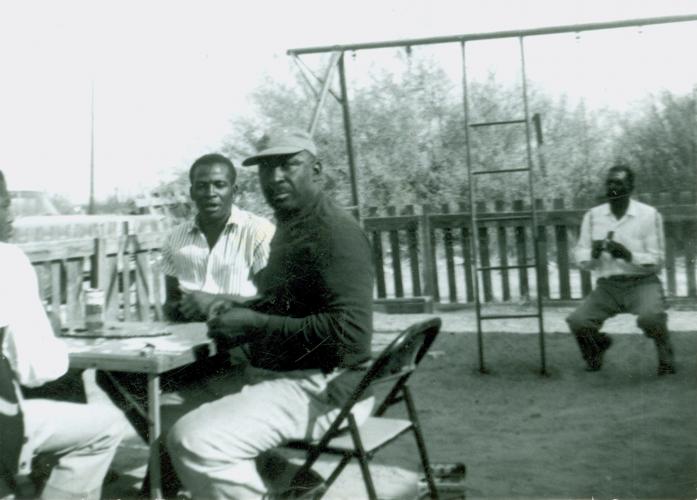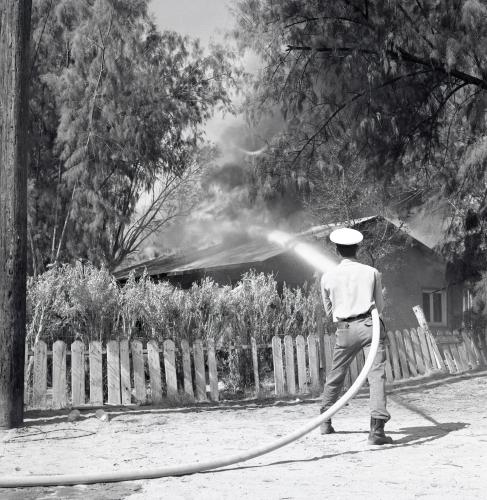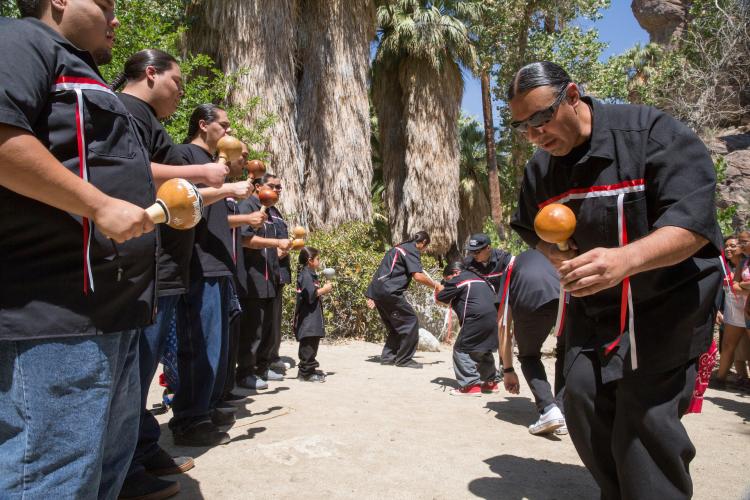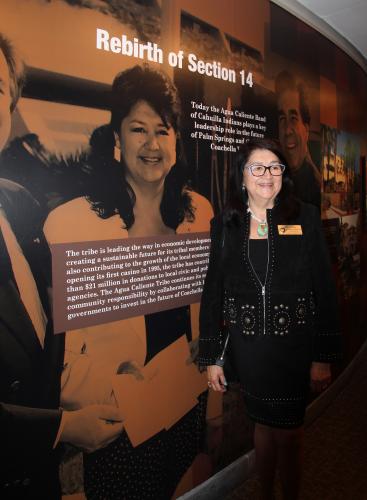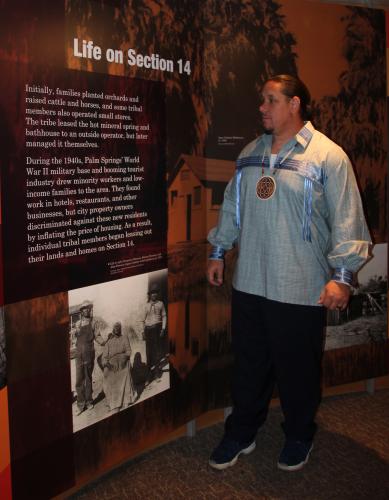Glittering in the desert of Southern California’s Coachella Valley lies the resort destination of Palm Springs. About 100 miles east of Los Angeles, this oasis of mid-century modern architecture, hot springs and secluded hotels became famous as a retreat for film and television “royalty” during the golden age of Hollywood. But unbeknownst to most visitors, Palm Springs is Indian land.
In the center of this bustling leisure town is Section 14, the 1 square mile that is the heart of the Agua Caliente Indian Reservation. The Agua Caliente Band of Cahuilla Indians who live here tell how their ancestor Ca wis ke on ca named the hot mineral spring that runs beneath this area “Sec he” (the sound of boiling water). As a sovereign nation, the Agua Caliente Tribe controls its lands. However, from the 1940s through the 1960s, the City of Palm Springs that governed the adjacent lands threatened that sovereignty, turning Section 14 into a battleground over land and race.
“Section 14: The Other Palm Springs, California”—an exhibit that was developed by the Agua Caliente Cultural Museum and is on display at the National Museum of the American Indian in Washington, D.C., until January 2020—conveys this struggle through stark black-and-white images mixed with vivid quotes from tribal members who lived through what at times was a fierce fight. “When we honor treaty obligations, the story comes out well; when we ignore our treaty obligations, ignore the grievances of the past, that is when troubles and difficulties arise,” says David Penney, NMAI’s associate director of Museum Scholarship, Exhibitions and Public Engagement. “This is one story of such troubles and difficulties—and their resolution.” Jeff Grubbe, chairman of the Agua Caliente Band of Cahuilla Indians and NMAI Board of Trustees member, says, “Section 14 is where the Agua Caliente Tribe’s creation story began— we are the People of the Water. The exhibition at the NMAI gives us an opportunity to tell our story in our own words.”
The Checkerboard Reservation
As part of the 1848 Treaty of Guadalupe Hidalgo, Mexico ceded lands that became the state of California. In 1852, the federal government segmented Southern California into a grid of 6-mile squares called townships, which surveyors further divided into 36 1-square-mile sections. Palm Springs straddles eight townships, and Section 14 lies adjacent to the city’s downtown.
In the 1860s, the U.S. government gave the Southern Pacific Railroad the odd-numbered sections of land for 10 miles on either side of the rail line. In 1876, President Ulysses S. Grant designated the even-numbered sections, about 900 acres, as the Agua Caliente Indian Reservation; President Rutherford B. Hayes expanded the reservation in 1877, bringing it to about 31,000 acres. This checkerboard pattern of land ownership became the foundation for future assaults on Agua Caliente sovereignty.
Growth of Section 14
During the 19th and early 20th centuries, the Agua Caliente reservation had little economic development. Some tribal members operated small stores, but most families planted orchards and raised cattle and horses. In part this was because a federal statute had prohibited the leasing of Indian lands. Then, between 1891 and 1955, the U.S. government allowed five- or 10-year leases. Yet the leases’ brevity still discouraged commercial development.
During the 1940s, Palm Springs’ World War II military base and flourishing tourist industry attracted minority workers and low-income families who often encountered housing discrimination. In response, individual Agua Caliente tribal members leased their lands on Section 14 to them, which provided these new residents homes and tribal members a source of income. In the exhibit, tribal member Lois Segundo-Workman recalls the diversity and civic responsibility that resulted from this economic arrangement: “It was a community where it wasn’t just Indians. It was Blacks. It was Mexicans . . . . It was like a family unit there, because they all were in that same situation and they all . . . leaned on each other.” Development was booming in Palm Springs, but Section 14 remained untouched. Some homes lacked modern conveniences, but many residents still enjoyed living in the community. In the exhibit, Agua Caliente tribal member Renona Pennington fondly reminisces that “[Living on Section 14] was probably some of the happiest days. I was safe. I was free. The backyard was desert, the flowers bloomed in the spring and at night in the summer time, we had to sleep outside, and my sister and I would lay in the bed and look up at the stars.”
The Battle for Control
The Indian Long-Term Leasing Act of 1955 increased lease terms on reservation lands from five to 25 years and encouraged developers to invest in reservations. However, development didn’t really flourish until President Eisenhower signed the 1959 Indian Leasing Act, which permitted certain tribes, including the Agua Caliente, to lease their lands up to 99 years. As Palm Springs’ popularity grew, however, so did the demand for its land. The City of Palm Springs set its sights on the valuable property next door to its burgeoning shopping and entertainment district: Section 14. City leaders could not acquire tribally owned land outright, so they attempted to restrict building, zoning and leasing on Section 14 as a means to control the area. The tribe, however, argued that as a sovereign nation, it did not have to accept any city laws or ordinances on tribal lands.
In the 1940s and early 1950s, the City of Palm Springs proposed three master plans to develop Section 14, but it never implemented them. Instead, it argued that tenants had to either bring their homes up to code or face eviction. The tribe had made earlier requests to the City of Palm Springs to provide utilities to Section 14 residents, but the city refused. It claimed that residents did not pay property taxes on reservation land. However, Loren Miller Jr., assistant attorney general for the State of California, conducted an investigation in 1968 and found that tribal members did pay taxes.
In 1959, the City of Palm Springs began evicting residents under the pretense of the new Conservatorship and Guardianship Program. Under this program, court-appointed conservators managed the finances of individual Agua Caliente tribal members, including terminating land leases and serving tenants notices of eviction. However, the tenants reported that they either never received eviction notices or that their homes were destroyed prior to the statutory 30-day period. Miller found during his investigation of the program that “[t]he City, acting upon the [eviction] permit, would burn down or destroy the dwelling in question any time it had received the permit without actually checking to see whether the time prescribed in the eviction notice had expired.”
During 1965 and 1966, the city demolished and burned at least 235 buildings. “People would come home and their personal belongings would be out on the street,” recalls James Jessie, former director of the city’s Desert Highland Unity Center. “They would just come in and bulldoze your house while you were gone to work or school.” The city’s abatement program forced many Section 14 residents to leave Palm Springs because no other low-income housing was available. The toll on the community was high. “Everybody went different directions,” former resident Alfonso Mediano recalls in the exhibit. “After that, we lost track of each other. As small as that town is, the only time we saw each other was at a funeral or [when] somebody got married.” Reverend Carl McPeters also laments: “The economic strength and the voting strength of the black community was destroyed, and the moral effects are lasting . . . . We were driven to the outskirts of the city and are still there today. We’re separated.”
The clearing of Section 14 ended in 1968 when Miller published his report documenting the city’s corruption and human rights violations. According to Miller, “The City of Palm Springs not only disregarded the residents of Section 14 as property owners, taxpayers and voters; Palm Springs ignored that the residents of Section 14 were human beings.”
In 2000, former residents of Section 14, representatives of the National Association for the Advancement of Colored People and local religious leaders sought an apology from the City of Palm Springs. Mayor Will Kleindienst later wrote a letter of acknowledgement, but the city never issued a formal apology. Families and descendants of those removed from Section 14 are still seeking closure.
The Revitalization of Section 14
During the 1970s, the Agua Caliente Tribe and the City of Palm Springs began to collaborate to bring in development. The spark began in earnest after the partners created a land-use contract in 1977 that specified that the tribe administer its own lands. Mildred Browne, who grew up on Section 14 and is now founding chairwoman of the Agua Caliente Cultural Museum Board of Directors, says, “We work together for the whole of the community. What benefits the tribe also benefits the city.” In 2014, the Agua Caliente Tribe initiated Vision Agua Caliente, a strategic plan for revitalizing its properties in downtown Palm Springs. Four years later, the tribe celebrated the groundbreaking of the Agua Caliente Cultural Museum, which is scheduled to open in 2020.
Today the Agua Caliente Tribe has about 500 members and more than 2,250 people working in its government and business enterprises. Thomas Davis, the tribe’s chief planning and development officer, says, “Section 14 has always been about forward-thinking and bringing the tribe’s image into the modern world.” Chairman Grubbe says the exhibit shows how the tribe also has come full circle: “We put our culture aside to learn how to be successful, and now we are embracing our culture again. We are very appreciative of where we are, but we do not want to forget where we came from.”

